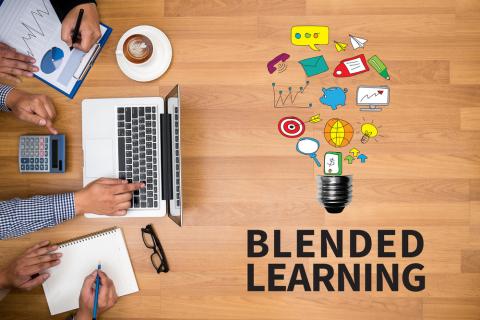European Economic
and Social Committee
Blended learning: equal access, full-length education and social skills must not suffer
The EESC supports the European Commission’s proposals to expand blended learning in schools and training, in particular their focus on ensuring inclusive high-quality education. However, concerns remain regarding social inequalities, early school leaving and children's socialisation, and on risks to young children's education, teachers' working conditions and public education.
The European Economic and Social Committee (EESC) has expressed some reservations about the Commission's recent proposal on introducing blended learning - traditional teacher-led learning combined with online or other independent work – in primary and secondary education, putting into question its timeliness given how greatly the COVID-19 pandemic has affected education systems in Europe and elsewhere.
In the opinion on blended learning adopted at its October plenary session, the EESC also raised concerns about the suitability of this mode of learning for primary and early secondary school students, arguing that it should first be introduced in higher grades, as younger children, especially those in the early primary years, are generally not mature enough to learn independently.
We are doubting that this is the right time to introduce or push to have blended learning in schools.
COVID-19 pandemic has had a huge impact on education systems and on children, and especially on small children who only just started their schooling experience. Blended learning is not the same as online learning or not even necessarily strictly a combination of in-person teaching and online learning. It refers to learning independently and it requires certain skills to be able to learn in this way,
said the rapporteur of the opinion Tatjana Babrauskienė.
The EESC said it acknowledged that blended learning can improve access to education, training and digital skills, as seen during the COVID-19 crisis.
However, the pandemic also showed that some students lack the resources – practical or personal – to learn in this way, which in the worst cases might lead them to abandon school. In addition, it showed that education done together with peers is essential for children's socialisation and mental health.
Blended learning has great potential to improve educational attainment after the pandemic. But it
must address educational disadvantage and early school leaving,
the co-rapporteur of the opinion Michael McLoughlin said.
Also, we cannot underestimate the value of the social role of education. It is not just about science, physics or maths, it is about kids going to school together, mixing, meeting their peers, it's about physical education, mental health,
he maintained.
The EESC has made 21 recommendations on how to ensure that blended learning can have a positive role in education. One major point is that it should be implemented and funded to enhance education and training for all students, with special care for those from lower-income backgrounds, with disabilities and in rural areas.
Quality and inclusive education, training and lifelong learning is a right for all in Europe. Blended learning should ensure this right,
Ms Babrauskienė stressed.
Blended learning techniques should also be tailored to different age-groups, levels of ability and types of courses, and not be misused to limit face-to-face and group education.
Safeguard opportunities to learn
One risk of blended learning is that it could increase digital and social divides caused by social and economic inequalities, for example if children live in families that cannot afford a computer or are in a remote area with limited broadband. The education of these students will suffer if blended learning is rolled out without appropriate planning.
Another key group who will need support will be students with disabilities. National authorities should budget for special equipment, for example to overcome visual impairments, or to adapt materials to atypical learning, for example for children with autism.
Indeed, blended learning will involve expenses for all courses, whether in hosting or buying licenses for online platforms, or for data security, teaching resources and equipment such as tools for vocational students to practice practical skills safely at home. Public authorities must be realistic about the additional investment required.
It is the EESC's firm belief that the governance of public education systems should be accountable, transparent and protected from the influence of private and commercial interests and players. Blended learning should be implemented in education programmes in such a way as to guarantee this.
The EESC therefore calls on Member States to develop national regulations for blended learning and, with teaching experts and other stakeholders, to set up public teaching and learning platforms so that education remains a public good.
Teachers in focus
The pandemic experience has shown that student-teacher interaction remains essential to student motivation and learning.
During the COVID crisis it has become apparent that blended learning demands considerable time and creativity from already overstretched teachers and, if not properly regulated, could undermine the quality of education provided to students.
In addition, the EESC reminds the Commission that teachers are central to the successful design and supervision of independent learning. There are already not enough teachers in Europe, partly due to pay and difficult working conditions. It is therefore important to monitor blended-learning's impacts on conditions and workloads to avoid burnouts.
To mitigate pressures, the EESC calls on national authorities to support teachers in training for this new method of learning. The new self-assessment tool from the European Commission, SELFIEforTEACHERS, is one example of how teachers can get help to improve their digital skills.
Reliable data should be at the core of all work on blended learning. The committee urges EU and national authorities to collect information on how young people learn at different ages and levels of ability and to monitor unwelcome impacts, including early school leaving and bullying, with relevant partners. This will allow authorities to design educational plans and adjust these if needed so that blended learning fulfils its potential for all of society.
